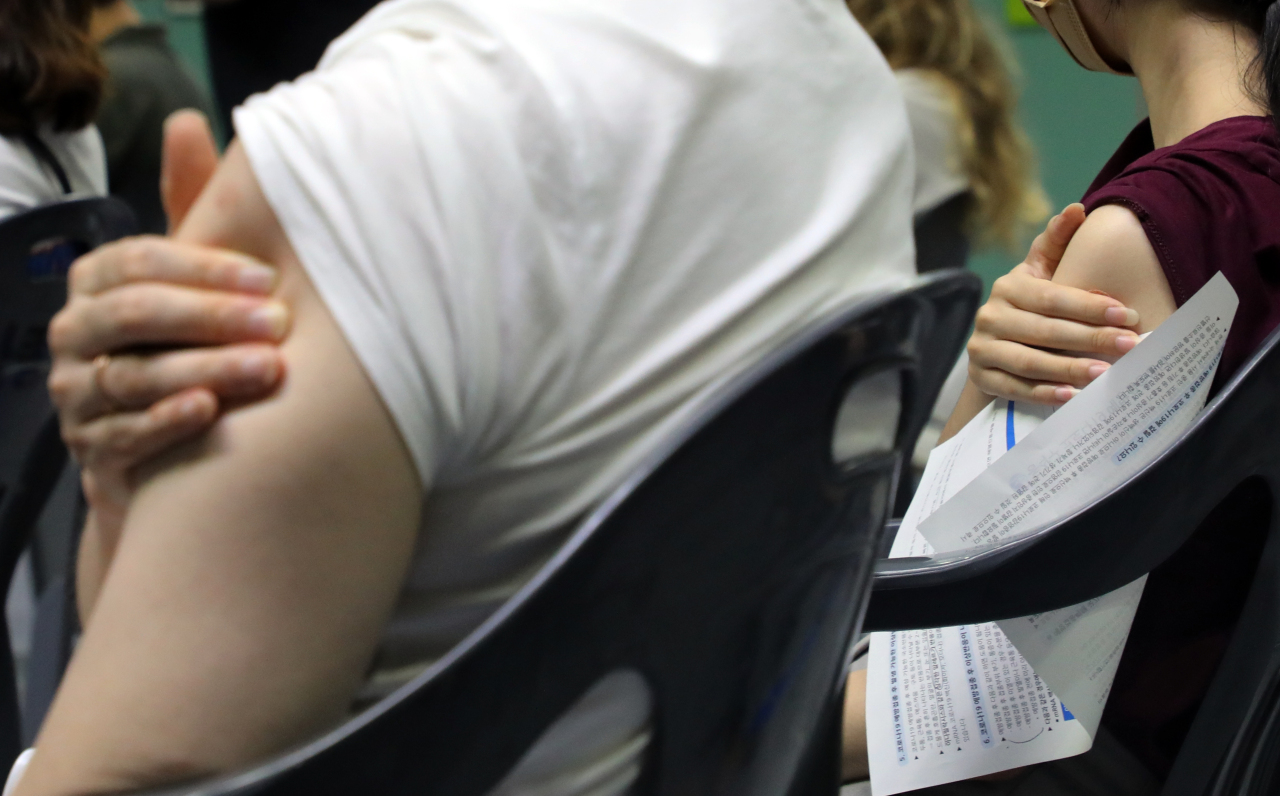South Korea is halving the minimum amount of time until a second dose of AstraZeneca’s COVID-19 vaccine to four weeks from eight weeks, in the hopes of accelerating the drive for full vaccination coverage.
Kim Ki-nam, leading the Korea Disease Control and Prevention Agency’s COVID-19 vaccination planning council, told a press briefing Thursday that “a stabilizing supply of vaccines has allowed us to expand eligibility and move up the timeline for second doses.”
He said people who had AstraZeneca as their first shot will be able to move their second appointment forward to four weeks from Sept. 28 onward.
Previously, the gap between two AstraZeneca doses was even longer -- 11 to 12 weeks -- before it was shortened to eight weeks in July. There are about 7.5 million people who have either received, or are scheduled to receive their second AstraZeneca dose at least 11 weeks after the first dose, according to the KDCA.
The interval between two doses of both the Pfizer and Moderna vaccines will remain at six weeks for now, Kim said, due to “vaccination capacity.” He said that until October, health care systems faced the task of managing mass vaccination campaigns against COVID-19 as well as other seasonal respiratory viruses such as influenza.
But starting Friday, anyone awaiting a second vaccination can book a “leftover” dose -- that is, one made available because someone else canceled an appointment -- earlier than the usual six weeks. People can book leftover doses three weeks after a Pfizer dose or four weeks after a Moderna dose.
Korea is poised to meet President Moon Jae-in’s goal of 70 percent of the 51 million people in the country with at least a single COVID-19 shot before Chuseok.
The latest statistics from the KDCA showed 68 percent of the population had received their first shots by the end of Wednesday, up from 67 percent the previous day.
Moon told a Cabinet meeting Tuesday that his administration was able to “deliver the promise of giving 70 percent of all Koreans a first dose in time for Chuseok.”
He then said the goal will be raised to get to a vaccine coverage rate of 80 percent. “The timeline for reaching a full vaccination rate of 70 percent will be sped up from late October,” he added, without specifying a date.
If Korea were to continue on its current trajectory, it was expected that 70 percent of the population would become fully vaccinated sometime in October, the Ministry of Health and Welfare’s spokesperson Son Young-rae told reporters Wednesday, elaborating on the expedited deadline set by the president the day before.
Since July, the most widely distributed vaccines in Korea have been those from Pfizer and Moderna. For both vaccines, the second doses are being given six weeks after the first in Korea under a revised policy driven by a supply shortage. By that calculation, people who received their first doses from August through early September will be due for their second in October.
As for concerns that the extended dosing interval was leaving people with only partial protection longer, Son said “talks are underway with pharmaceutical companies” over deliveries this month and the next.
Between July 4 and Sept. 4, 15,903 people who received their first shots contracted COVID-19 before they could get their second, accounting for 18 percent of the 86,919 cases confirmed over the period.
As of Wednesday at midnight, the full vaccination rate here stood at 41 percent, low in comparison to over 50 percent achieved by Japan, which began its vaccination program just nine days ahead of Korea.
Lee Sang-won, a senior KDCA official, explained in Wednesday’s briefing that Korea’s vaccine drive has focused on “giving as many people as possible one dose so that they can benefit from some immunity.”
“In terms of the full vaccination rate, Korea is expected to catch up with other countries in Europe or the US very soon,” he said.
More than 60 percent of the 5.2 million doses given out in the last seven days were first doses.
Korea has averaged 369,383 vaccinations per day so far this month, peaking at 1,374,038 on Sept. 6 -- the most in a day since the rollout began on Feb. 26. For August, the one-day average was 285,969 vaccinations, more than triple July’s average of 90,335.
Despite nearly 70 percent of people being at least partially vaccinated, Korea counted 1,943 more cases on Thursday in a protracted fourth wave, down slightly from 2,079 cases seen the day prior. An average of 1,782 cases have been logged per day this month, with the cumulative total reaching 279,930.
As the number of patients under isolation soars to record levels, Korea is expanding at-home care for those with mild or no symptoms at the time of diagnosis.
“If herd immunity is returning to life as we knew it before COVID-19, then that may not be attainable in the near future,” said Lee of the KDCA. “The goal of the vaccination campaign is to protect as many people as we can from falling seriously sick.”
By Kim Arin (
arin@heraldcorp.com)








